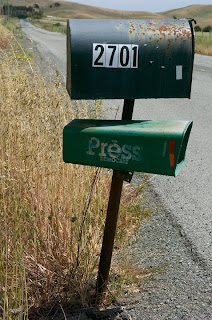I have taken a position with this blogsite that I want to have a civil discussion.
However, part of my approach is that I won’t engage with the very prolific “anonymous.”
My site doesn’t generate a lot of comments, but about one in five are “anonymous.” A while back, I changed my policy by indicating that “anonymous” comments will no longer be posted.
Here’s the problem; some of the “anonymous” comments are worthy of sharing. I don’t need to know exactly who is responding on this site.
In the public square, one gets to see who is speaking and then judge from their demeanor just how much credibility to give the responder. Without having an identifier, any anonymous becomes every anonymous. Anonymous becomes a blur of multiple personalities.
I request that comment posters who are unwilling to use their name adopt a screen name so my readers and I have an idea of who is communicating.
Part of what I do here is to try to introduce my readers to the players in the public square, be they: politicians, journalists, those making news and the “every man story maker,” who are the topics of this blog.
So I ask that if you wish to add to the discussion, please adopt a screen name, so my readers and I can keep track of the participants. I revert to the program seller at sporting events hawking their product by yelling, “you can’t tell the players without a program.”
So what’s wrong with this picture?
 What’s news? It’s more than just the products found under the kiosk sign of a newsstand, like this one at Washington National Airport. News is a wide range of information that people want to know about or should know about or need to know about in order to be a well informed citizen.
What’s news? It’s more than just the products found under the kiosk sign of a newsstand, like this one at Washington National Airport. News is a wide range of information that people want to know about or should know about or need to know about in order to be a well informed citizen.Mark Twain a newspaper reporter, editor and publisher may have said it best:
If you don't read the newspaper you are uninformed, if you do read the newspaper you are misinformed.
 After posting the story on Matthew Astorga’s activities in the Leavenworth, Kan. area, I received an anonymous comment. The person relates a fractured story with little detail. It raises potential self defense claims that I will try to verify. It is journalistically unethical to publish unsubstantiated assertions.
After posting the story on Matthew Astorga’s activities in the Leavenworth, Kan. area, I received an anonymous comment. The person relates a fractured story with little detail. It raises potential self defense claims that I will try to verify. It is journalistically unethical to publish unsubstantiated assertions. This particular anonymous, who seems to be from Kansas, asks two questions about their claims of facts:
Why are these things not being reported??The reason the allegations made by anonymous is not being reported is, no one knew until now.
Really... why is this making it to the Albuquerque media outlets?
Why the Astorga story made it to the Albuquerque media outlets is because crime, especially with a local hook, is always news.
 I am not a great fan of the “news scoop,” the title given to the first media outlet to report a particular story. It’s partly based on human nature, of wanting to know what is happening right now, and part marketing ploy to bragging rights.
I am not a great fan of the “news scoop,” the title given to the first media outlet to report a particular story. It’s partly based on human nature, of wanting to know what is happening right now, and part marketing ploy to bragging rights.
I believe that getting the story right and putting it into proper context is also important. Breaking news does not always allow for the time necessary to understand the deeper meaning of the headlines of developing stories.
 The nature of the news business is changing. The local newspapers, though being challenged by the Internet, mobile phones and personal electronic devices, are still as viable products in our society as are the postal system. E-mail, text-messaging, and twittering may speed our written communications, but it hasn't made the post box obsolete. Contrary to any complaints about how hard it is for papers to survive in the current economic climate, they still are turning profits in the range of 15 to 20 percent. There are lots of industries that would love to bemoan such profit rates.
The nature of the news business is changing. The local newspapers, though being challenged by the Internet, mobile phones and personal electronic devices, are still as viable products in our society as are the postal system. E-mail, text-messaging, and twittering may speed our written communications, but it hasn't made the post box obsolete. Contrary to any complaints about how hard it is for papers to survive in the current economic climate, they still are turning profits in the range of 15 to 20 percent. There are lots of industries that would love to bemoan such profit rates.
The Leavenworth Times posted this story Dec. 30, along with a follow up Jan. 2, on their website. Someone listed my story in the Times comment section. I was sent an e-mail by a Times reader, about the story.
Stories about the Astorga's of Albuquerque are news.
I believe I was the first local media with this story and posted a little before 1 p.m. MST, though Blogger time stamp indicated 1:57 p.m.
I gave the story to my buddy, Peter St. Cyr at KKOB. He went on air at 5 PM and posted to his site, “What’s the Word?” at 4:43 p.m. I provide images for his site.
In an ad-hoc unscientific experiment, to see how this story might spread, I also sent an e-mail to Sheriff Darren White. That evening, the only TV station to run the story was KRQE. White was a crime reporter at KRQE before being elected Sheriff.
The Albuquerque Journal’s T.J. Wilham ran the story the next morning citing the Times article.
I did some follow up with Leavenworth Times reporter John Richmeier and learned Wilham had called him after 5 p.m. Wednesday. Thursday, other media started catching up. My blogging colleague Sgt. Joe Schmedlap, who had his own previous contact with the Astorgas, posted his own story.
Though I credited my sources, nobody except St. Cyr did. Scooping is cutthroat.
Santa Fe Reporter's Editor Julia Goldberg, in her Blog, has repeatedly complained about her staff writing original stories that other media copy and rewrite without acknowledging their source.
I agree with Goldberg that source identification is important and should be done with greater regularity.
 I am not a great fan of the “news scoop,” the title given to the first media outlet to report a particular story. It’s partly based on human nature, of wanting to know what is happening right now, and part marketing ploy to bragging rights.
I am not a great fan of the “news scoop,” the title given to the first media outlet to report a particular story. It’s partly based on human nature, of wanting to know what is happening right now, and part marketing ploy to bragging rights.I believe that getting the story right and putting it into proper context is also important. Breaking news does not always allow for the time necessary to understand the deeper meaning of the headlines of developing stories.
 The nature of the news business is changing. The local newspapers, though being challenged by the Internet, mobile phones and personal electronic devices, are still as viable products in our society as are the postal system. E-mail, text-messaging, and twittering may speed our written communications, but it hasn't made the post box obsolete. Contrary to any complaints about how hard it is for papers to survive in the current economic climate, they still are turning profits in the range of 15 to 20 percent. There are lots of industries that would love to bemoan such profit rates.
The nature of the news business is changing. The local newspapers, though being challenged by the Internet, mobile phones and personal electronic devices, are still as viable products in our society as are the postal system. E-mail, text-messaging, and twittering may speed our written communications, but it hasn't made the post box obsolete. Contrary to any complaints about how hard it is for papers to survive in the current economic climate, they still are turning profits in the range of 15 to 20 percent. There are lots of industries that would love to bemoan such profit rates.The Leavenworth Times posted this story Dec. 30, along with a follow up Jan. 2, on their website. Someone listed my story in the Times comment section. I was sent an e-mail by a Times reader, about the story.
Stories about the Astorga's of Albuquerque are news.
I believe I was the first local media with this story and posted a little before 1 p.m. MST, though Blogger time stamp indicated 1:57 p.m.
I gave the story to my buddy, Peter St. Cyr at KKOB. He went on air at 5 PM and posted to his site, “What’s the Word?” at 4:43 p.m. I provide images for his site.
In an ad-hoc unscientific experiment, to see how this story might spread, I also sent an e-mail to Sheriff Darren White. That evening, the only TV station to run the story was KRQE. White was a crime reporter at KRQE before being elected Sheriff.
The Albuquerque Journal’s T.J. Wilham ran the story the next morning citing the Times article.
I did some follow up with Leavenworth Times reporter John Richmeier and learned Wilham had called him after 5 p.m. Wednesday. Thursday, other media started catching up. My blogging colleague Sgt. Joe Schmedlap, who had his own previous contact with the Astorgas, posted his own story.
Though I credited my sources, nobody except St. Cyr did. Scooping is cutthroat.
Santa Fe Reporter's Editor Julia Goldberg, in her Blog, has repeatedly complained about her staff writing original stories that other media copy and rewrite without acknowledging their source.
I agree with Goldberg that source identification is important and should be done with greater regularity.
No comments:
Post a Comment